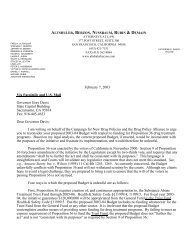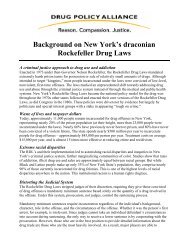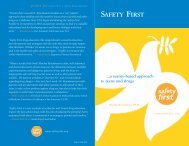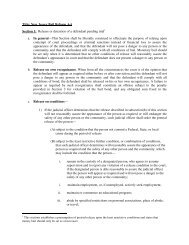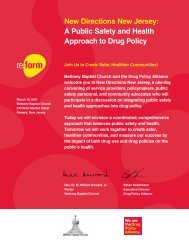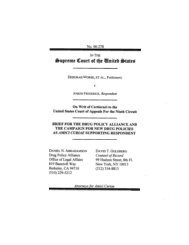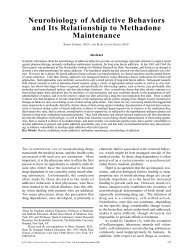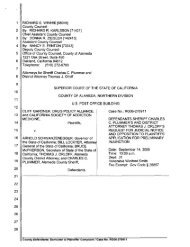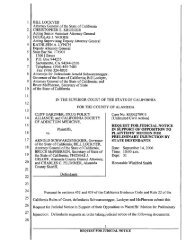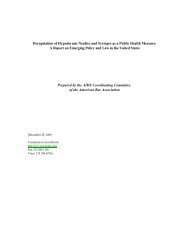Drug Policy And Health In Romania - Drug Policy Alliance
Drug Policy And Health In Romania - Drug Policy Alliance
Drug Policy And Health In Romania - Drug Policy Alliance
You also want an ePaper? Increase the reach of your titles
YUMPU automatically turns print PDFs into web optimized ePapers that Google loves.
DRUG POLICY AND HEALTH IN ROMANIA<br />
A Profile Prepared by the <strong>Drug</strong> Law and <strong>Health</strong> <strong>Policy</strong> Resource Network<br />
Full Report<br />
I. INTRODUCTION<br />
The <strong>Drug</strong> Law and <strong>Health</strong> <strong>Policy</strong> Resource Network is an international research<br />
collaboration designed to improve data collection and policy analysis on drug policy and<br />
health in the countries of Eastern Europe and the Former Soviet Union. The information<br />
in this report was gathered by staff at Temple University’s Beasley School of Law and<br />
the University of Connecticut <strong>Health</strong> Sciences Center. It will be augmented by further<br />
research in 2002 by network collaborators in the study region.<br />
This Report presents available information in six domains: HIV/AIDS, other<br />
infectious diseases, injection drug use, law and law enforcement practices, public health<br />
interventions, and economic and social indicators. It concludes that <strong>Romania</strong> is in the<br />
early stages of a serious HIV epidemic driven primarily by injection drug use. With<br />
sufficient external support and dramatic internal changes in drug policy and law<br />
enforcement practice, a public health effort against HIV and other blood-borne diseases<br />
could be successful.<br />
II.<br />
HIV/AIDS<br />
Accurate and complete data on HIV in <strong>Romania</strong> are not available. The data<br />
presented here are from a variety of sources and may not entirely agree. These data<br />
generally do not represent HIV incidence, and depend heavily upon patterns of HIV<br />
testing and reporting that remain very incomplete in the most severely affected countries.<br />
HIV infection is defined as an individual with HIV infection confirmed by a laboratory<br />
according to country definitions and requirements. AIDS cases are reported according to<br />
a uniform AIDS case definition originally published in 1982 and revised in 1985, 1987<br />
and for adults and adolescents (age >13) in 1993. The 1993 European AIDS surveillance<br />
case definition differs from that used in the United States in that it does not include CD4<br />
lymphocyte criteria.<br />
Overall Data. Since 1985, 2,263 children and 288 adults have died from AIDS in<br />
<strong>Romania</strong>. (5) Most of <strong>Romania</strong>’s HIV/AIDS cases have been caused by non-sterile<br />
medical equipment and contaminated blood. (3) <strong>Romania</strong> is home to over 50% of all<br />
pediatric AIDS cases in Europe. (4) Its almost 9,000 infected children is thought to be<br />
caused by <strong>Romania</strong>’s leader in the 1980’s. <strong>In</strong> an effort to increase the population, he<br />
outlawed contraception, social workers and HIV screening. Also, many children received<br />
needless blood transfusions during this time period. The problem is expected to worsen<br />
because 85% of <strong>Romania</strong>’s 5,000 street children are sexually active. The disease moves<br />
<strong>Romania</strong> – 21 February 2002 - 7



